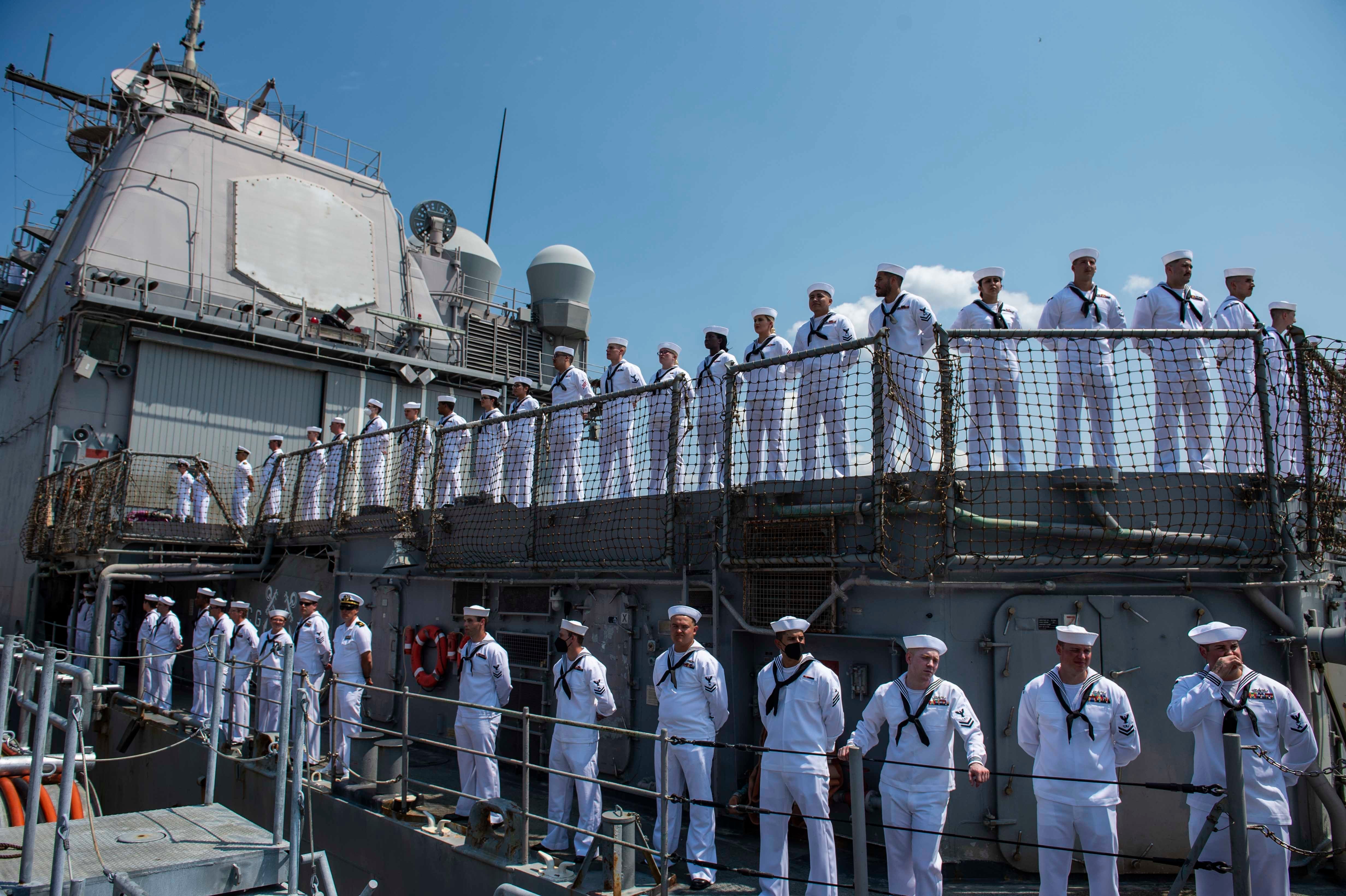The Navy exceeded its retention goals for fiscal year 2023, keeping more than 110% of sailors with up to 14 years of service.
Despite recruiting challenges facing most of the services, 35,175 active-duty enlisted sailors decided to stay in uniform — up from the Navy’s 31,823 projected target, Navy Personnel Command told Navy Times.
For Zone A sailors — those with up to six years of service — the service retained 117% in FY23. Altogether, 21,371 sailors in that zone stayed Navy, out of the 18,210 the Navy expected to keep.
Among Zone B sailors, those with six to ten years of service, the Navy fell just shy of its goal and retained 97% of sailors, renewing 7,890 Zone B sailors out of its 8,107 target.
The Navy also retained 107% of Zone C sailors — those with ten to 14 years of service — and kept 5,914 Zone C sailors, up from the 5,506 goal.
RELATED

Recent changes aimed at improving retention include shifting to billet-based advancement, which also seeks to eliminate gaps at sea and offers sailors extra monetary incentives.
For example, the Navy ushered in the Detailing Marketplace Assignment Policy last year that allows E-4 and below sailors in sea-intensive ratings to sign on for another three-year journeyman sea tour as an E-5. Under the policy, sailors are offered up to $800 a month in incentive pay.
The Navy also announced in February that it would knock off any physical fitness assessment failures on a sailor’s record in an effort to improve retention, as well as accessions and attrition. The service billed the policy as a “one-time reset” to allow experienced active-duty and Navy Reserve sailors to remain in the Navy.
RELATED

Additionally, the Navy suspended its high-year tenure policy in December 2022, which forced active duty sailors to move into the Fleet Reserve if they didn’t advance within certain benchmarks.
The new policy, effective for two years, prevents commands from separating or involuntarily transferring active component sailors to the Fleet Reserve.
“The Navy understands we are in a challenging recruiting environment, and we are focused on making sure that every active component Sailor who wants to remain on active duty has that opportunity,” Rear Adm. James Waters III, director of the Military Personnel Plans and Policy Division, said in a Navy news release last year.
The Navy also hit its retention goals in FY22 and FY21, but like most of the other services in recent years, is struggling with recruitment.
The Navy announced this month it missed its recruitment goals for active duty enlisted sailors by more than 7,450 accessions in FY23. Although it met its goals in FY22, the Navy drained its Delayed Entry Program pool to the lowest level in 40 years to do so. The program allows someone to join the Navy prior to their shipping date.
Military leaders attribute these struggles to more thorough medical screenings, fewer Americans eligible to serve and low civilian unemployment.




